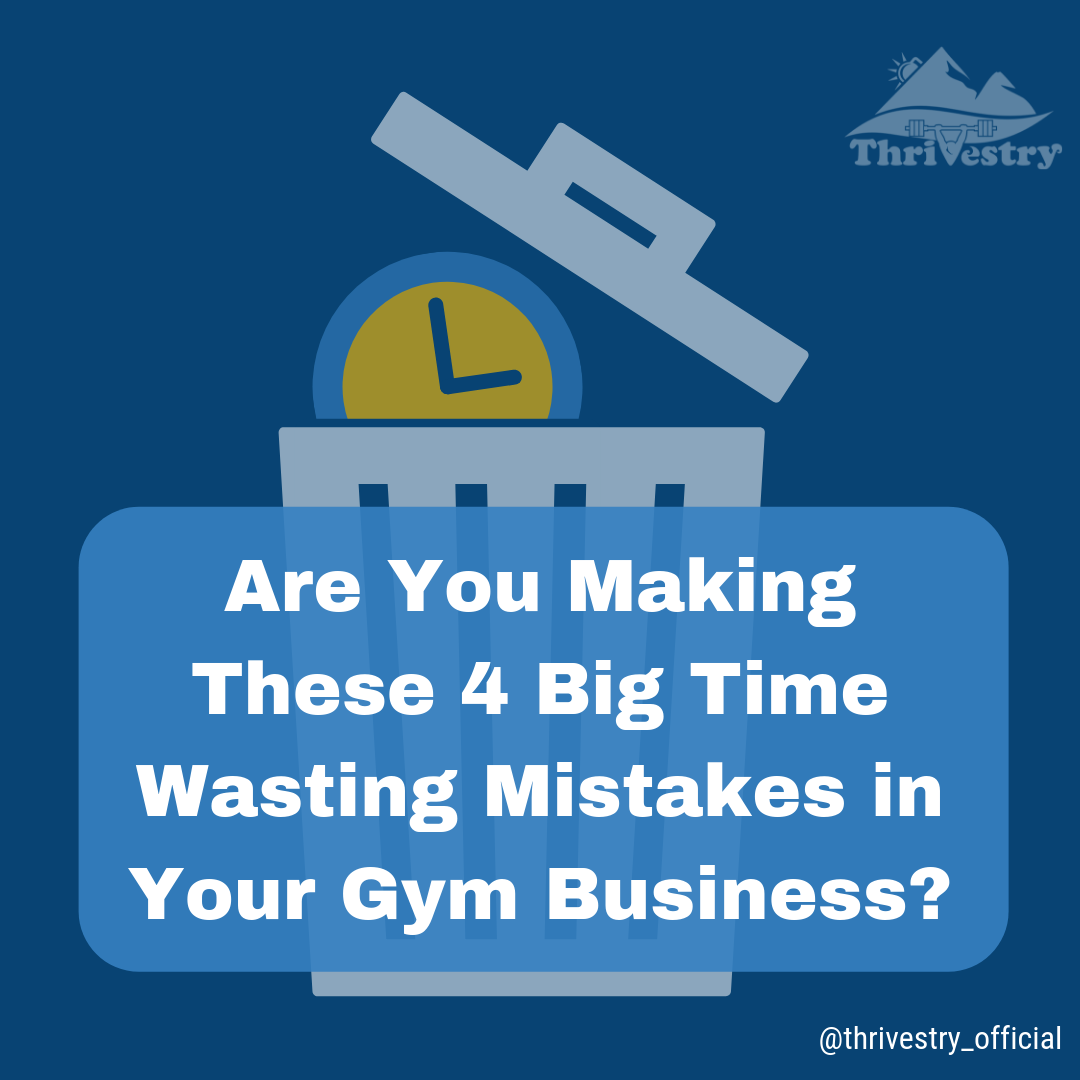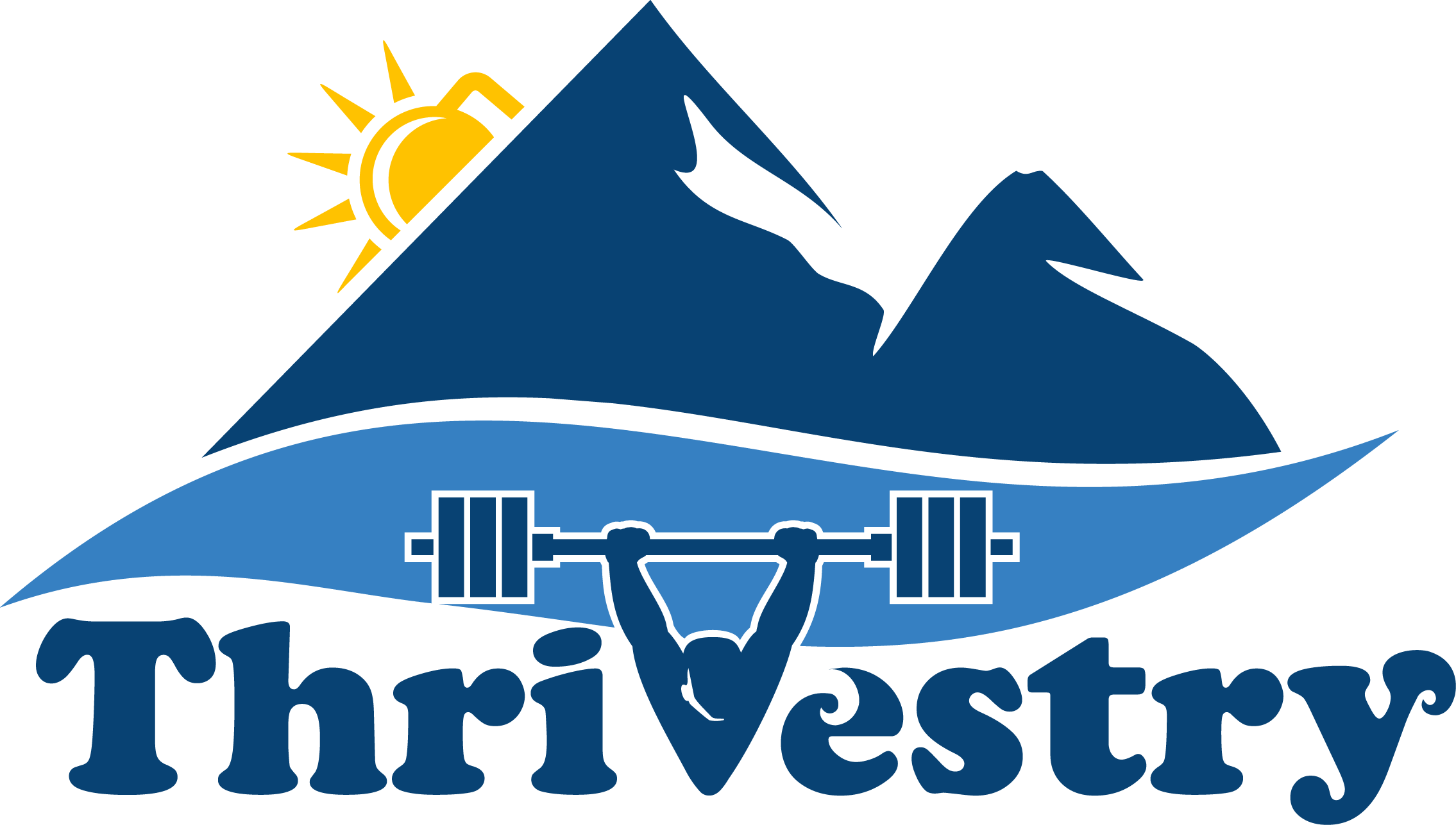Are You Making These 4 Big Time Wasting Mistakes in Your Gym Business?
I am always surprised by how many “life” lessons can be applied to work and business. I am sure that this correlates directly to the fact that businesses and customers are generally comprised of actual humans… but I do think there are some principles that represent this more than others.

A great article that came up on my feed was one from Lifehacker about “The Biggest Wastes of Time We Regret When We Get Older”. As I worked my way through it, it struck me that these ideas are VERY true for small business/entrepreneurs and many people leading teams. Let me break down some examples.
Not asking for help.
“If you are not asking for help, you are not challenging yourself enough”. Whether it is afraid of looking weak in front of peers/customers, you think you don’t have the time to learn, or if you think you can’t afford to pay for mentoring/outsourcing, the amount of waste created nearly always outweighs the benefits.
Getting direction, help, or instruction is time ‘invested’ versus time ‘spent’. It also guarantees better performance down the road. Figuring it out on your own may work for now, but in the long run it may cost you dearly because there has been a better way all this time. You don’t know what you don’t know.
EXAMPLE: An example in the gym would be a coach who doesn’t know the answer to a movement issue with a client. If they just ‘make up’ an answer, they may set the client off on the wrong path for years and even hurt them. Acknowledging that they don’t have the answer -yet- and then going to find it from a more experienced coach or attending a seminar is a much better solution!
Trying to make bad relationships work.
Working with a colleague or an employee that isn’t a good fit causes excessive friction, saps energy that could be used for progress, and creates a dread (stress) when thinking about a project/work.
Stress (like time, money and energy) is a finite resource. Working with an employee that is developing and progressing is one thing, butting heads and getting nowhere is something completely different. And the friction can tap your reserves before you even see each other. If the same issues keep coming up time and time again, if the thought of interacting with this person cause a spike in cortisol, it is a sure bet that this is a bad relationship.
Changing roles so that you don’t have to work together is one option. Adapting the roles so that expectations can be better synced is another. Firing is always an option if you are the boss (but if this is one of your ‘go tos’ often, you might need to take a closer look inward).
EXAMPLE: One example might be a customer that gives you the cold sweats. If you can’t stand dealing with this person and the thought of them walking into your business makes you nauseous, it is time to let that client go. You can always give them “it’s not you it’s me” speech or set some standards in the relationship that you know they will not be willing meet (so they ‘fire’ themselves).
Dwelling on your mistakes and shortcomings.
Spending meeting after meeting rehashing a mistake and trying to create the perfect policy to prevent mistakes in the future is futile. It also creates a situation where people (like yourself) are afraid to take risks not because of the consequences of failing specifically, but the “ripples” of meetings and damage to reputation that follow.
Mistakes will be made and if you create a culture where people aren’t challenging themselves and ‘reaching’, you are guaranteed to always be moving too slow and reacting (versus initiating).
The Antifragile way to handle this is to set up the mechanism that enables experimentation, but quickly moves past criticism and analysis and on to forgiveness and the future. When someone makes a mistake, and everyone learns from it, that person shouldn’t be forced to re-live that error over and over again. That hard-won experience has value. The ultimate judge of failure isn’t what was lost, but what was learned in the process.
EXAMPLE: If one of your employees initiates a project (in the case of gyms it could be a specialty program like a 6 week gymnastics skills course) and it falls flat due to lack of buy in, that experience can be used for the next project. Was it scheduled far enough in advance? What was the medium for getting the word out? What was the message delivered? Who was the ideal ‘client’ for this project? Shaming the employee for initiating the project (especially if it is repeatedly over the years), sends a signal to the whole organization: don’t take initiative and don’t take risks. Celebrating the lessons learned and acknowledging that the mistakes were ‘best guesses’ at the time will spur innovation and motivation.
Worrying too much about other people.
Trying to pay attention to every competitor in your field and play a ‘years long’ game of chess with them will only stress you out and waste time. Focusing on your own purpose, culture, and people, is a much better use of that energy.
EXAMPLE: Using another ‘in-gym’ analogy is the client in class who keeps looking around at what everyone else is doing. Looking at someone else’s weight on the bar. Counting someone else’s reps. Watching someone else’s form. All of this attention takes away from the process of self-improvement.
Learning from others is one thing, devoting resources and time to stress about them is another.
Cultivating a strong ‘why’ for yourself and your business is one way to keep your energy focused on getting better and not beating someone else (here is a great book for that). You can’t control what everyone else is going to do, and if your goal is just to do better than them you may be selling yourself short of your true potential.
I hope these perspectives help you in your personal lives as well as your business lives (which probably has more overlap than we’d like to admit)!
Feel free to share this. And sign up here if you want more stuff like this in your inbox!
Thrive on.
-jj

0 comments
Leave a comment